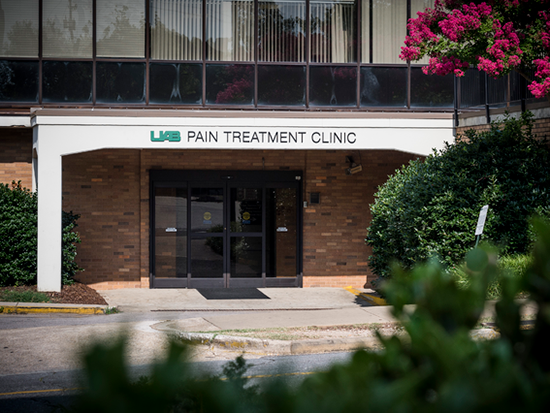 Multifidus stimulation is for patients with chronic, non-surgical low back pain who demonstrate impaired function in the muscles that stabilize the spine.Physicians at the University of Alabama at Birmingham Pain Treatment Clinic are offering a new treatment for chronic low back pain. The new treatment offered through UAB Medicine focuses on stimulating one of the key stabilizing muscles of the lumbar spine, the multifidus muscle, which is often dysfunctional in patients after injury or stress to the spine, spinal discs or other soft tissues surrounding the spine. Neural inhibition, or impaired control, of the multifidus muscle can cause a lack of spinal support and lead to chronic pain.
Multifidus stimulation is for patients with chronic, non-surgical low back pain who demonstrate impaired function in the muscles that stabilize the spine.Physicians at the University of Alabama at Birmingham Pain Treatment Clinic are offering a new treatment for chronic low back pain. The new treatment offered through UAB Medicine focuses on stimulating one of the key stabilizing muscles of the lumbar spine, the multifidus muscle, which is often dysfunctional in patients after injury or stress to the spine, spinal discs or other soft tissues surrounding the spine. Neural inhibition, or impaired control, of the multifidus muscle can cause a lack of spinal support and lead to chronic pain.
“This is a totally new way of treating back pain,” said Prentiss Lawson Jr., M.D., an associate professor in the UAB Department of Anesthesiology and Perioperative Medicine and program director of the UAB Pain Medicine Fellowship. “This treatment consists of an implanted neurostimulator that rehabilitates the muscles of the lower back, potentially improving pain and physical function over time.”
Multifidus stimulation is for patients who continue to have low back pain after usual treatments like physical therapy and who show some degree of weakness or discoordination of the multifidus muscles. This treatment involves a minimally invasive outpatient procedure, where two electrical leads are implanted underneath the skin near the nerves that activate these muscles.
An internal battery powers the system, and patients use a remote control to initiate two 30-minute therapy sessions per day. Treatment sessions are described to feel like a deep tissue massage. Patients can complete their sessions while resting in bed or sitting on the couch. Over time, the multifidus muscles may strengthen to provide support to the lumbar spine. Once the patient achieves their goals of improved pain relief and functionality, they can tailor their therapy sessions as needed.
“We are really excited to be able to offer this to our patients, and to be able to educate the next generation of pain experts on this new treatment paradigm,” Lawson said. “The medications and procedures we have traditionally relied on to treat chronic pain may relieve symptoms but rarely treat pain at its cause. This treatment allows us to focus on improving pain by restoring function.”
According to the multi-site follow-up study of patients at three years after receiving this treatment for their back pain, more than 70 percent of those taking opioid medications voluntarily decreased or eliminated consumption.
Multifidus stimulation may even help patients reduce their reliance on strong pain medications. According to the multi-site follow-up study of patients at three years after receiving this treatment for their back pain, more than 70 percent of those who were taking opioid medications voluntarily decreased or eliminated consumption.
“Multifidus stimulation appears to be a promising therapy in well-selected patients,” said Christopher Paul, M.D., an assistant professor in the UAB Department of Anesthesiology and Perioperative Medicine and medical director of the UAB Pain Treatment Clinic. “While there are many patients we see who may benefit from this treatment, there are also those who may need surgery or for whom other treatments are recommended. It is important to be evaluated by a physician who has experience assessing patients for the procedure.”
Along with Lawson and Paul, Brandon Brooks, M.D., and Alethia Sellers, M.D., at the UAB Pain Treatment Clinic will be offering this treatment. Patients who are interested in seeing if they are a candidate for this procedure should call the UAB Pain Treatment Clinic at (205) 930-8966. Those interested can also learn more about the treatment on the latest episode on UAB Med Cast.